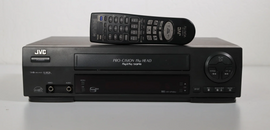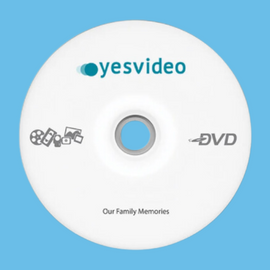
A Miniature Digital Video Disc (Mini-DVD) is a smaller version of the standard DVD disc format, designed to store and play back digital video and other types of data. Mini-DVDs were primarily used in camcorders and other portable devices, offering a more compact and convenient way to record and store video. In this blog post, we will explore the history, technical specifications, and uses of the Mini-DVD format.
History of Mini-DVDs
Mini-DVDs were introduced in the early 2000s as a response to the growing popularity of digital camcorders. At the time, digital camcorders were becoming smaller and more portable, but they still used large VHS and Hi8 tapes for recording video.
Mini-DVDs offered a more compact and convenient alternative, allowing users to record and store digital video on a small, easy-to-handle disc. Mini-DVDs were also more durable and reliable than tape-based formats, which were prone to degradation over time.
Technical Specifications of Mini-DVDs
Mini-DVDs use the same basic disc format as standard DVDs, with a diameter of 80mm and a thickness of 1.2mm. Mini-DVDs use the same MPEG-2 video codec as standard DVDs, allowing for high-quality video at a resolution of 720x480 pixels for NTSC video and 720x576 pixels for PAL video.
Mini-DVDs have a maximum capacity of 1.4GB, which is significantly less than the 4.7GB capacity of a standard single-layer DVD. This limited capacity was a trade-off for the smaller size of the Mini-DVD format, but it still allowed for approximately 30 minutes of high-quality video to be recorded on a single disc.
Mini-DVDs also use a different disc-loading mechanism than standard DVDs. Instead of a disc tray or slot-loading mechanism, Mini-DVDs are inserted into a small, spring-loaded mechanism on the side of the camcorder or other device. This allowed for the Mini-DVD format to be used in smaller, more portable devices.
Uses of Mini-DVDs
Mini-DVDs were primarily used in digital camcorders, allowing users to record and store digital video on a small, easy-to-handle disc. Mini-DVDs also offered several advantages over tape-based formats, including greater durability and reliability, and the ability to easily navigate and edit recorded video.
In addition to camcorders, Mini-DVDs were also used in some portable DVD players and other small devices that required a compact and durable disc format. However, the limited capacity of Mini-DVDs meant that they were not well-suited for storing large amounts of data or longer video recordings.
Challenges and Limitations of Mini-DVDs
While Mini-DVDs offered several advantages over tape-based formats and other disc formats, they also had some limitations and challenges. The most significant of these was the limited capacity of Mini-DVDs, which made them less well-suited for longer video recordings or storing large amounts of data.
Mini-DVDs were also less compatible with standard DVD players and other devices, which limited their usefulness outside of the digital camcorder market. Additionally, the spring-loaded mechanism used to load and eject Mini-DVDs was more prone to mechanical failure than the tray or slot-loading mechanisms used in standard DVD players.

Mini-DVDs Today
Mini-DVDs were a compact alternative to standard DVD discs, designed for use in digital camcorders and other portable devices. Mini-DVDs offered several advantages over tape-based formats, including greater durability and reliability, and the ability to easily navigate and edit recorded video.
However, the limited capacity of Mini-DVDs, as well as the compatibility issues with standard DVD players and the potential for mechanical failure in the loading mechanism presented challenges to the format.
Despite these limitations, Mini-DVDs were popular in the early 2000s and were widely used in digital camcorders and other portable devices. They offered a more convenient and durable way to record and store digital video than the tape-based formats that preceded them, and their smaller size made them well-suited for use in portable devices.
As technology continued to evolve, Mini-DVDs became increasingly outdated. The rise of digital storage and cloud services made it easier than ever to store and share digital video. The limited capacity of Mini-DVDs was no longer sufficient for many users' needs. Additionally, the increasing popularity of digital streaming and on-demand video services made physical media formats like Mini-DVDs less relevant.
Today, Mini-DVDs are largely obsolete, and are rarely used outside of older camcorders and other legacy devices. Like the larger discs, Mini-DVDs can scratch and crack, making it impossible to recover the video memories or home movie content. This is why smart consumers are converting this video content to portable MP4 files and enjoying the video on the cloud, for life.

